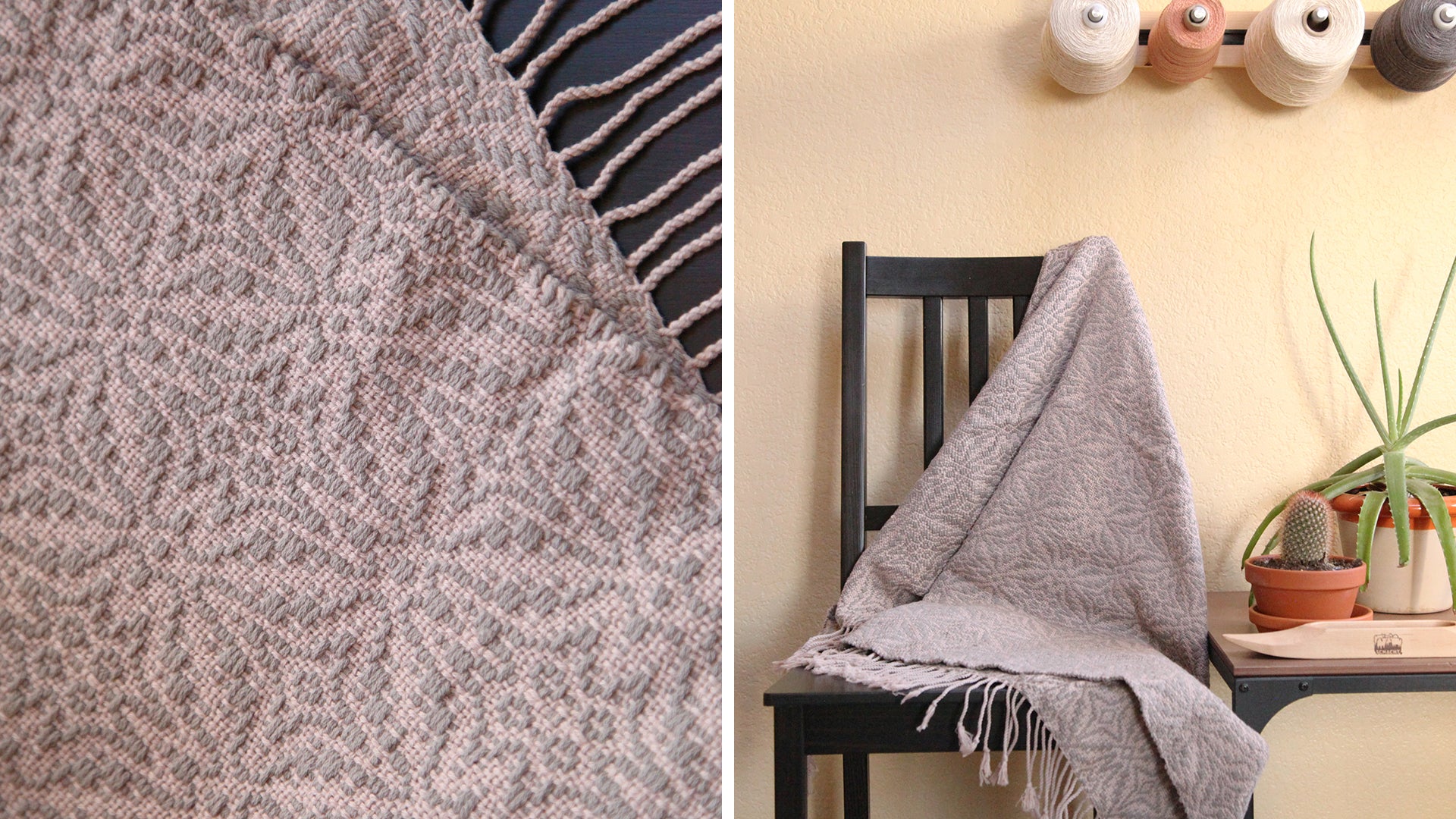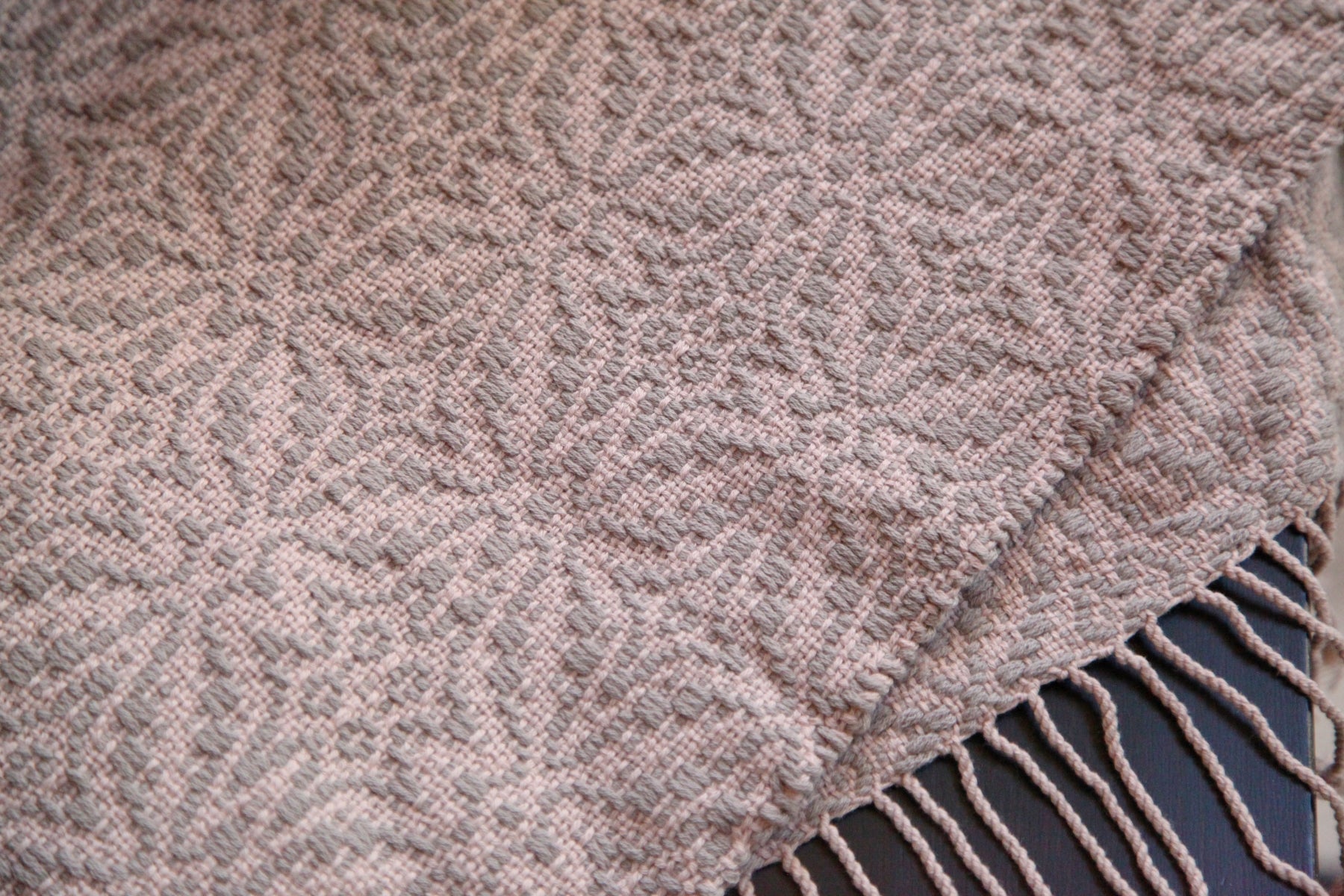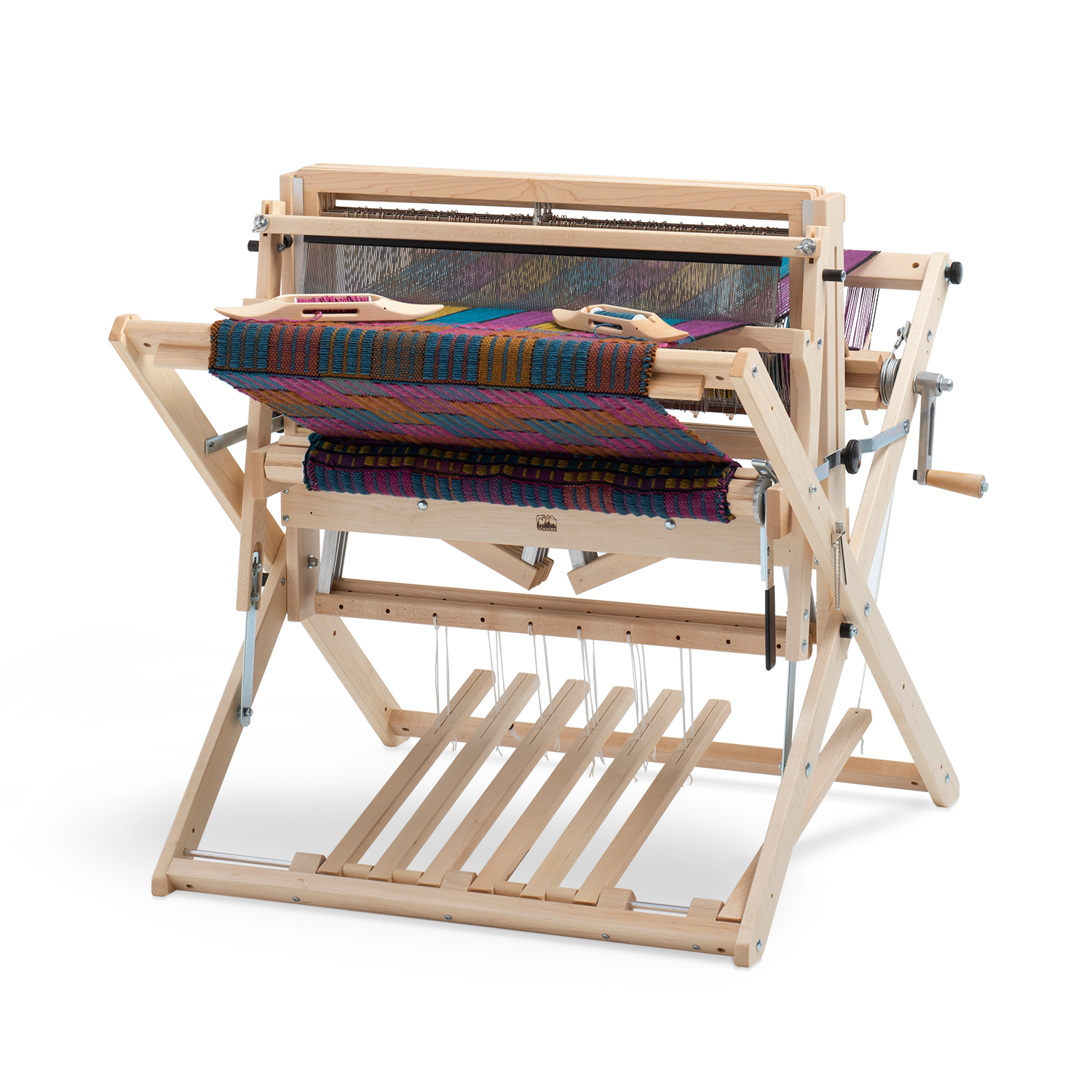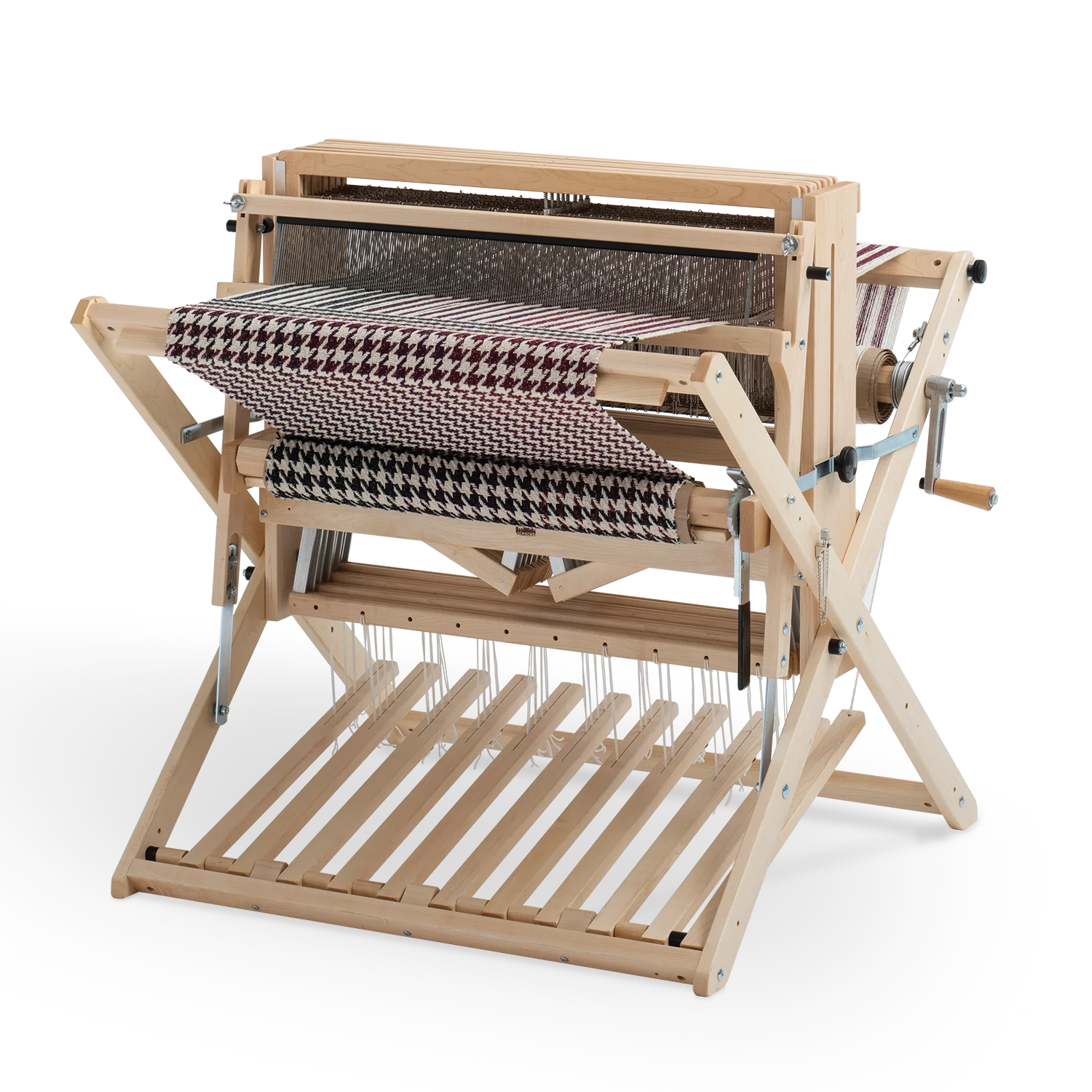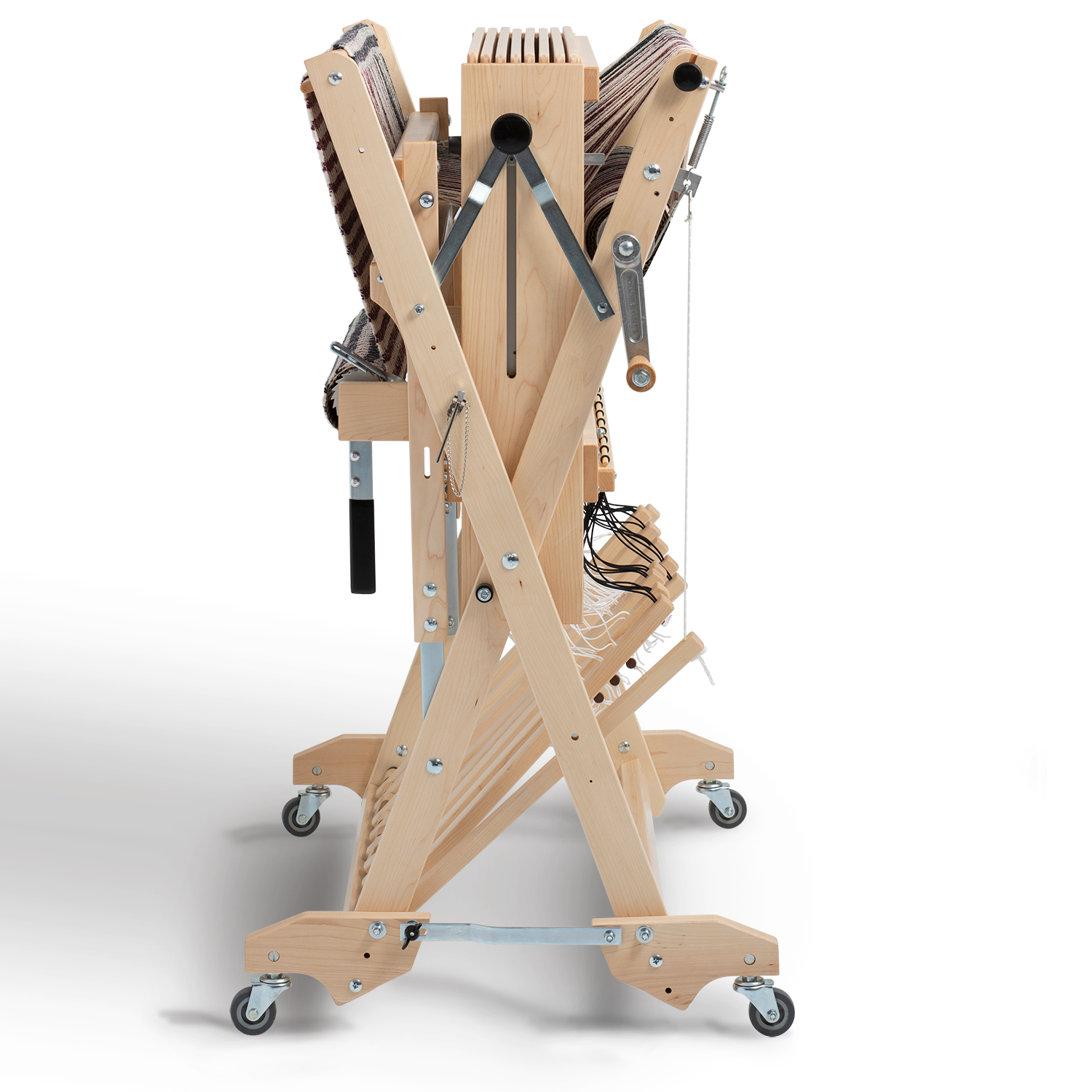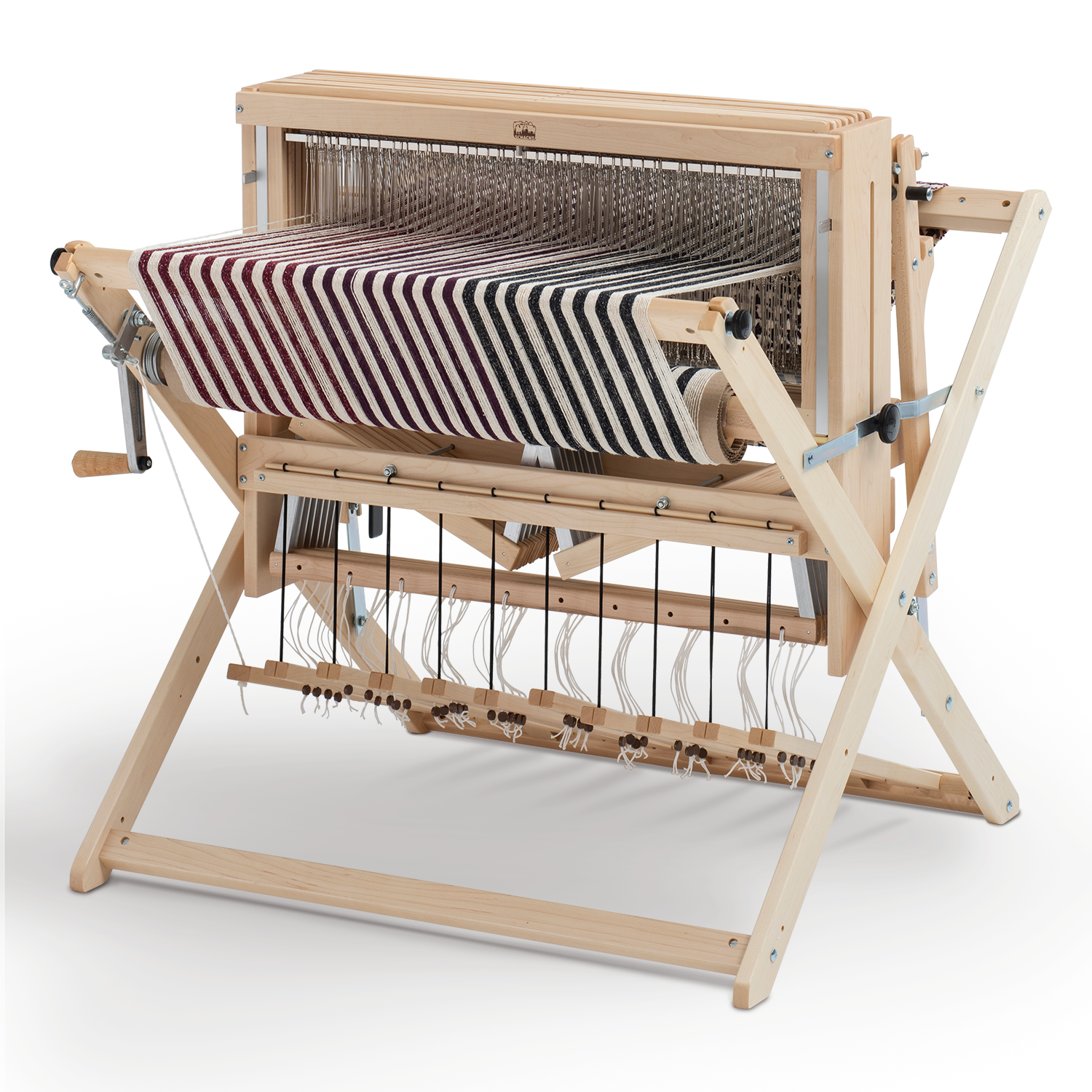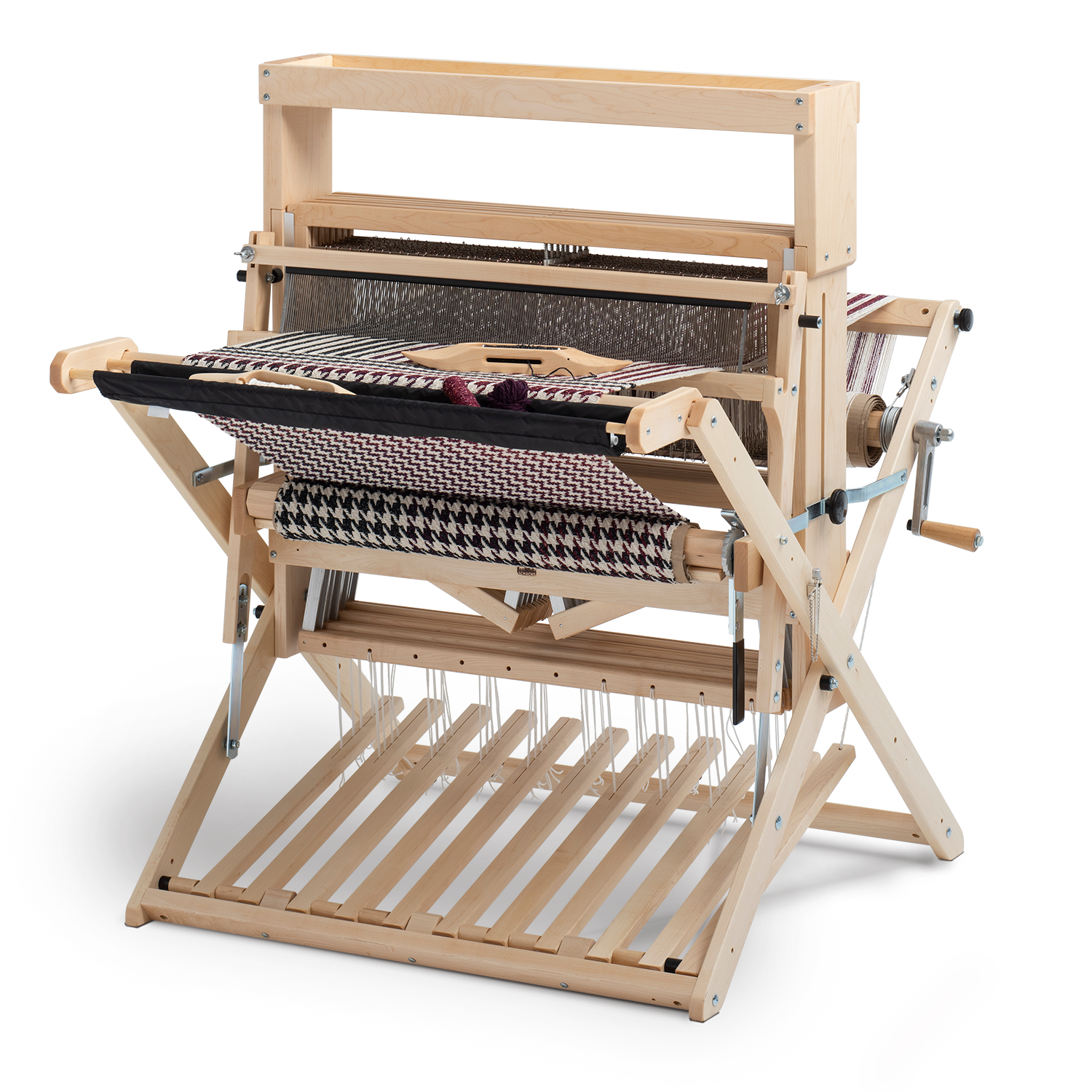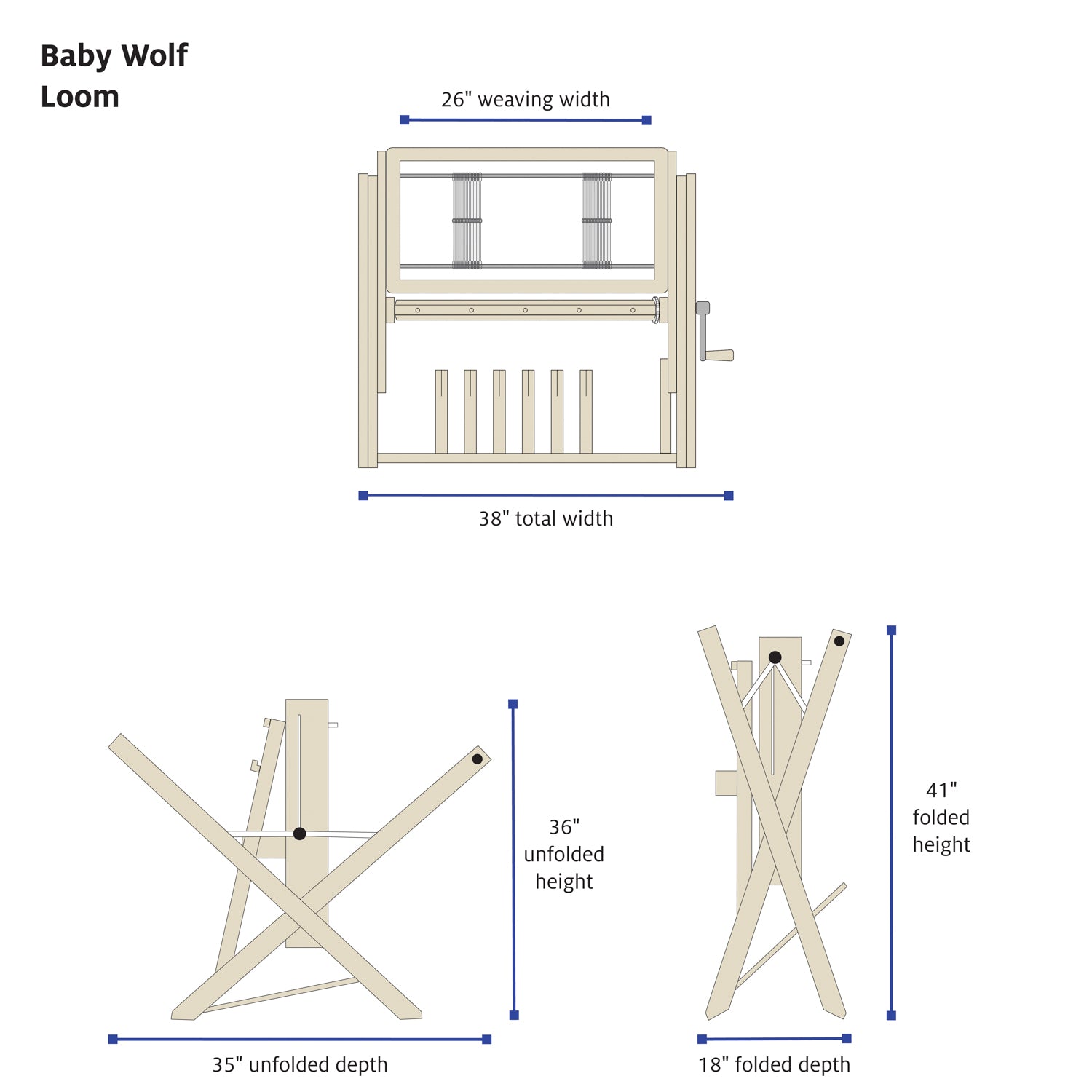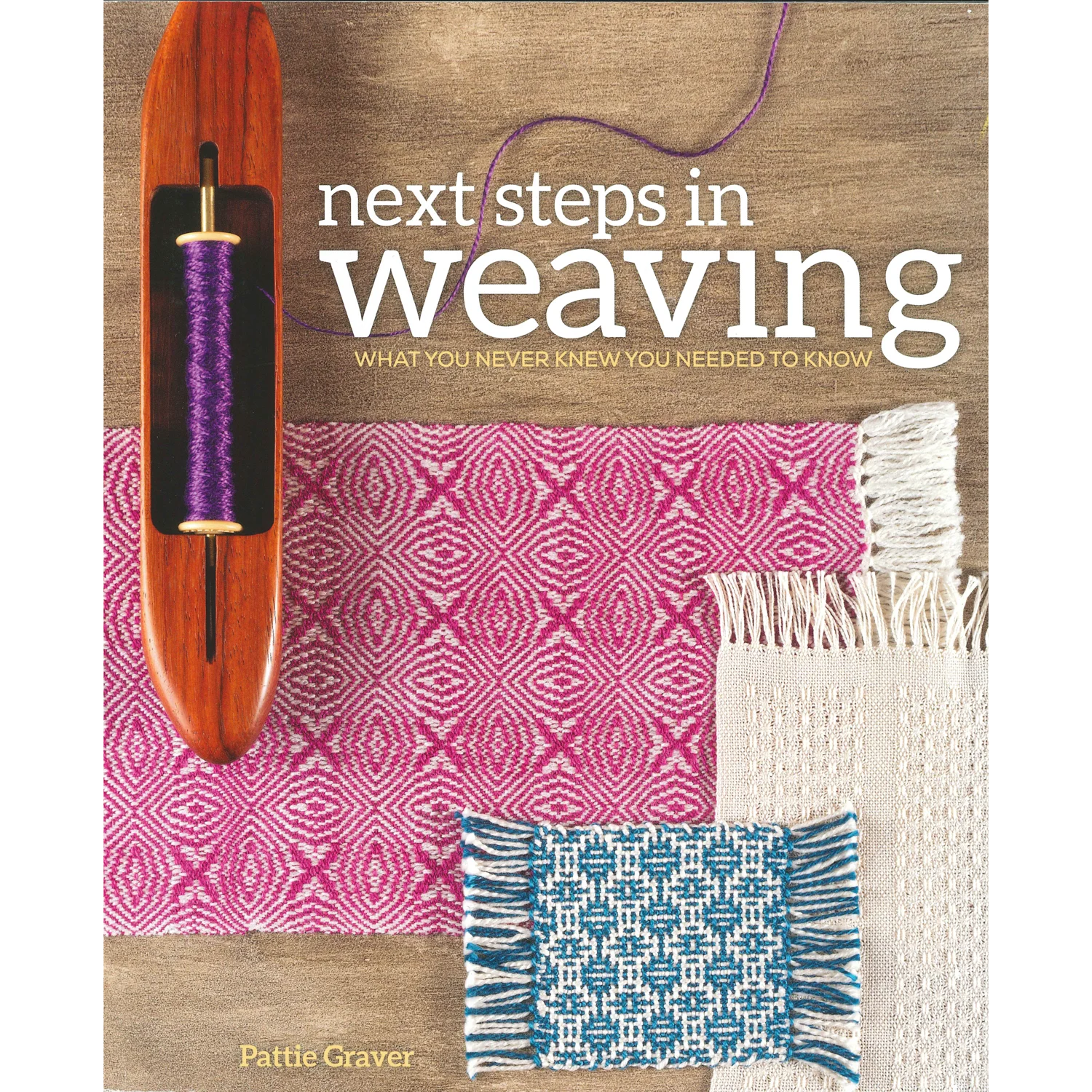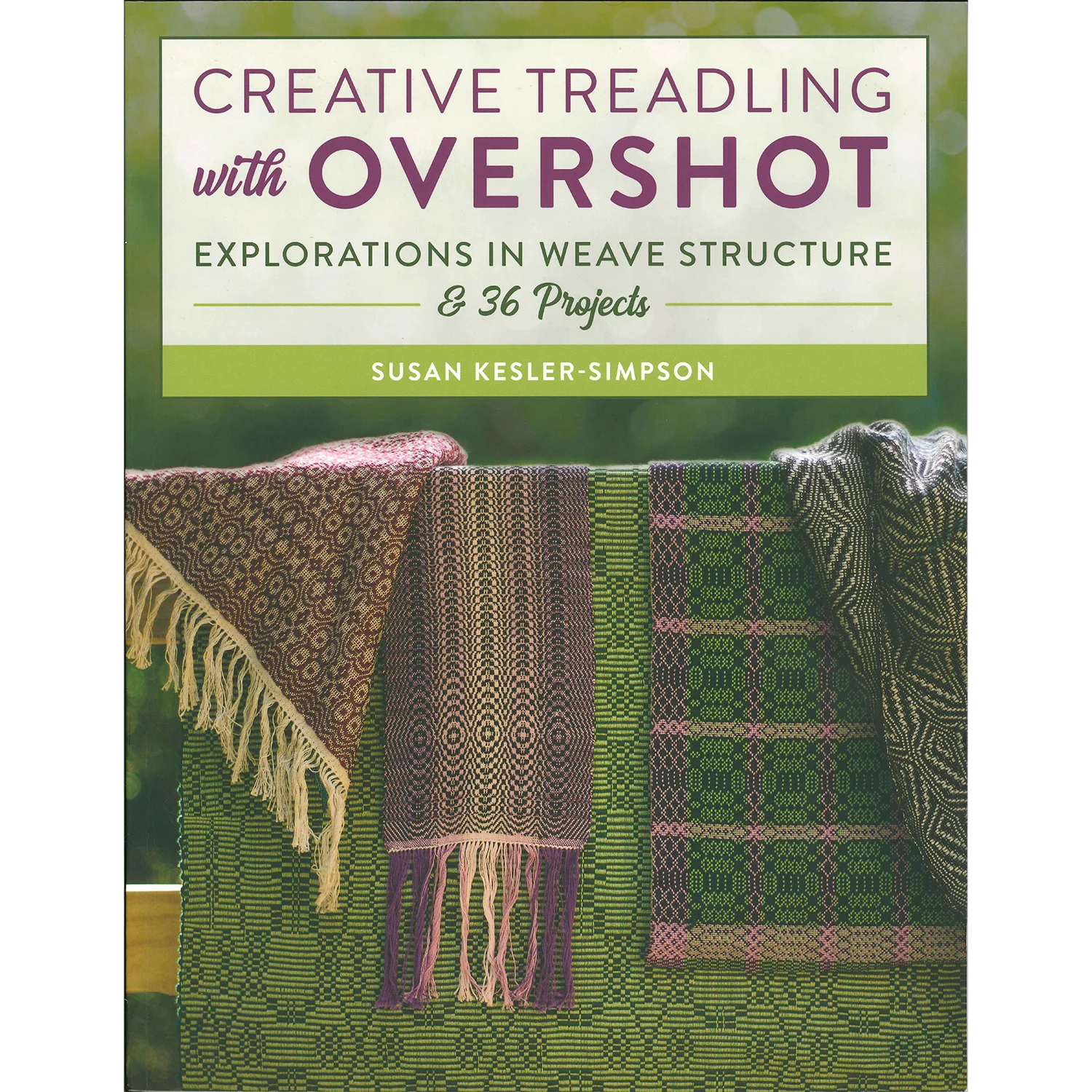Subtle Star Overshot Doubleweave Blanket
Designed and woven by Rachel Simmons
PLEASE NOTE: WE ARE CURRENTLY DOUBLE CHECKING THE DRAFT FOR THIS PATTERN AS WE HAVE HAD COMMENTS THAT THERE MAY BE A MISTAKE.
When we want "more" from our art, sometimes that wish gets muddled with wanting "more stuff" to make the art. But more stuff isn't always possible. Then comes the very beautiful realization that we can make more with what we have—especially if it's a high-quality tool like a Schacht 8-shaft floor loom. The trick is learning how to make what you have give you more.
There was a moment when I felt limited by the width of my Baby Wolf. Twenty-six inches is great for a lot of things, but I wanted to make a blanket. And I wanted my blanket to be free from seams, woven as one whole cloth. Twenty-six inches would be an awfully small whole cloth blanket. Then I discovered doubleweave and my troubles melted away, taking the dreaded seams with them. With 8 shafts, you can weave intricate patterns in doubleweave, gaining twice the width of your reed. Any 4-shaft pattern can be converted to a doubleweave, using 4 of the 8 shafts to weave the top layer and the other 4 to weave the bottom. This knowledge opened up so many new weaving possibilities, I know I will be exploring them for quite some time.
The pattern I have drafted for this particular blanket is my take on a more traditional Star of Bethlehem motif. It is woven in neutral colors, the warp and tabby weft complementing the pattern weft in a subtle difference of hue. Every time I unfold a doubleweave cloth from the beam, it is like magic to see it double in size before my eyes. It also deepens my appreciation of the wonderful art of weaving and the masterful crafting of good tools that can give so much of the "more" we crave.
Project Specs
Finished size: 40-3/8" wide and 45-1/2" long, not including 5" fringe on each end
Weave structure: overshot doubleweave
Number of warp ends: 566, including 2 floating selvedges
Warp length: 90", including 30" for loom waste and take-up
Width in reed: 23-7/16"
EPI: 12 for each layer
PPI: 16 (8 tabby, 8 pattern)
What You'll Need
-
Brown Sheep Cotton Fine (80% pima cotton, 20% merino wool; 215 yds / 1.76 ounces; fingering weight), Vintage Linen (cream): 650 yards for warp and 650 yards for tabby weft
-
Brown Sheep Cotton Fleece (80% pima cotton, 20% merino wool; 215 yds / 3.5 ounces; DK weight), Weathered Barn Wood (brown): 650 yds for pattern weft
-
8-shaft loom with at least 24" weaving width—I used my Baby Wolf
- 12 dent reed
- 2 shuttles and bobbins
- fringe twister
Materials
Equipment
Directions
Warping Notes
When you warp the loom, you will thread a top-layer warp end, followed by the corresponding bottom-layer warp end. Together, these two warps will "hold" a half-pass of weft, reaching from one selvedge to the other of your blanket. This means your top and bottom layers have to be warped simultaneously. Do not warp all of the top layer followed by all of the bottom layer. Sley each pair in the same dent of the reed. Take it slow and minimize distractions. Once you begin weaving, you will be blind to what is happening in your bottom layer most of the time. It is really important to get the warp right before you begin to save yourself heartache.
With doubleweave, the bottom layer is woven with the wrong side facing up. The threads that are left down create the overshot pattern. You will have to utilize all 10 treadles to accomplish this.
The first 4 treadles create the top layer, simply lifting shafts 1 through 4 individually per treadle. You must step on two treadles for each pick on the top layer of your blanket.
For the bottom layer, you must use 6 treadles: 4 to lift the top layer out of the way and 2 to raise warp from the top layer. Each treadle will raise a combination of 6 shafts, leaving the remaining shafts down to create the pattern (i.e., if warps threads in shafts 5 and 8 need to go over your pattern weft, tie shafts 1, 2, 3, 4, 6, and 7 to a treadle, leaving 5 and 8 unattached). Tie up treadles 5 through 10 with combinations for the overshot pattern and for tabby.
Weaving
Warp your loom using your preferred method following the weaving draft. Gray boxes in the threading and tie-up (below) indicate shafts and treadles for the bottom layer.

Sley the reed with 2 threads per dent, one from the top layer, one from the bottom layer. Place both floating selvedges in the same dent on the furthest dent at the left selvedge. You'll weave with the open side on the left and the fold at the right.
To make sure you do not accidentally weave shut the open side of your blanket, think of the floating selvedges in a series of four passes: over both, under both, between, between.

Starting on the left side, spread the warp using a scrap yarn that is easy to remove. For this header, treadle the tabby sequence 1 & 3 / 9 / 10 / 2 & 4.
Wind one shuttle with the tabby weft (Cotton Fine Vintage Linen) and another with the pattern weft (Cotton Fleece Weathered Barn Wood). You will alternate between these two yarns as you weave; whenever they meet at the left selvedge, twist the yarns around each other. Remember that you must weave 1 pick in the top layer and 1 pick in the bottom layer—half a pass—before changing threads. A full pass includes one pick of tabby weft and one pick of pattern weft on both layers.
Starting on the left selvedge, begin the weaving draft using Cotton Fine Vintage Linen for the tabby picks and Cotton Fleece Weathered Barn Wood for the pattern picks. (A typical overshot draft does not include the tabby picks, but because of the doubleweave, they have been included in this draft.)

The treadling sequence always runs top tabby, bottom tabby, top pattern, bottom pattern, for the first half-pass; then bottom tabby, top tabby, bottom pattern, top pattern for the second half-pass. (The treadling draft is marked in 8-row repeats to help you stay on track, with tabby picks marked in gray.) Picks 1a, 1b, 3a, and 3b always run left to right; 2a, 2b, 4a, and 4b always run right to left. The tabby pick always comes before its corresponding pattern pick.

Stop and check often that there are no stray mistakes catching the layers together: slide a ruler, stick shuttle, or pick-up stick between the layers to check for snags in the interior. Don't pull your weft tight at the fold on the right selvedge, where you turn the corner from a pick on the top layer to a pick on the bottom layer.
Once your blanket measures 55", weave a few tabby picks with scrap yarn to protect the finished edge of your weaving. Cut the blanket from the loom, making sure to leave warp length for the fringe.
Finishing
Unfold the blanket. Trim the fringe down to 6 inches. Work a twisted fringe in bundles of 6 threads, adding the floating selvedges to the bundles at each edge.
- Weave in weft tails but don't trim them yet.
- Using a mild detergent, wash the blanket by hand or on the delicate cycle of a washing machine. If you are using darker colors or colors that might migrate, use 1/8 cup white vinegar with the mild detergent and/or a color-catching laundry sheet. Air dry flat or on a drying rack.
Trim away any tails on your blanket. Trim the fringe for a crisp-line finish if desired.
Notes
Resources
Graver, Pattie. Next Steps in Weaving. Interweave Press, 2015.
Miller, Carrie. "Getting Started with Doubleweave." https://schachtspindle.com/blogs/projects/getting-started-with-double-weave
Moore, Jennifer. Doubleweave, revised and expanded edition. Interweave Press, 2019.

